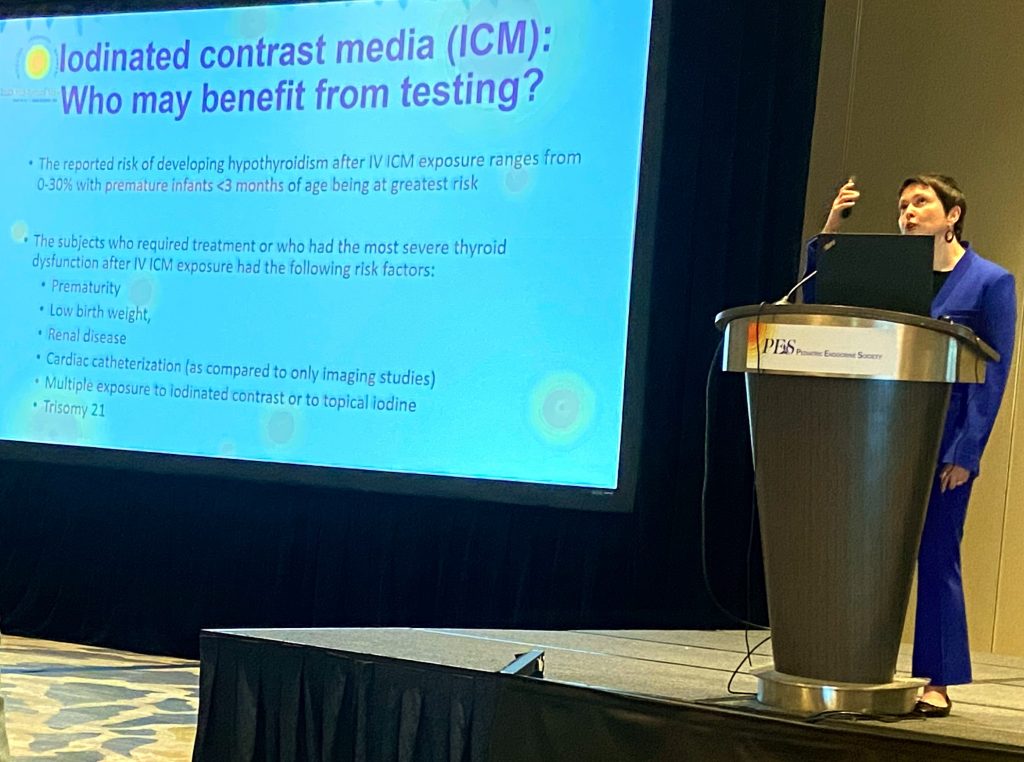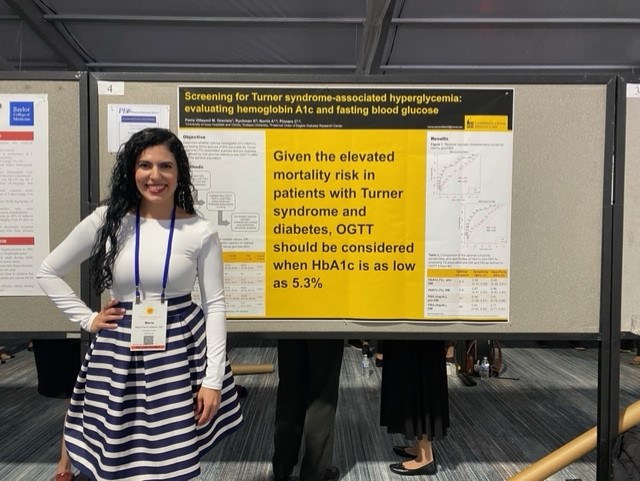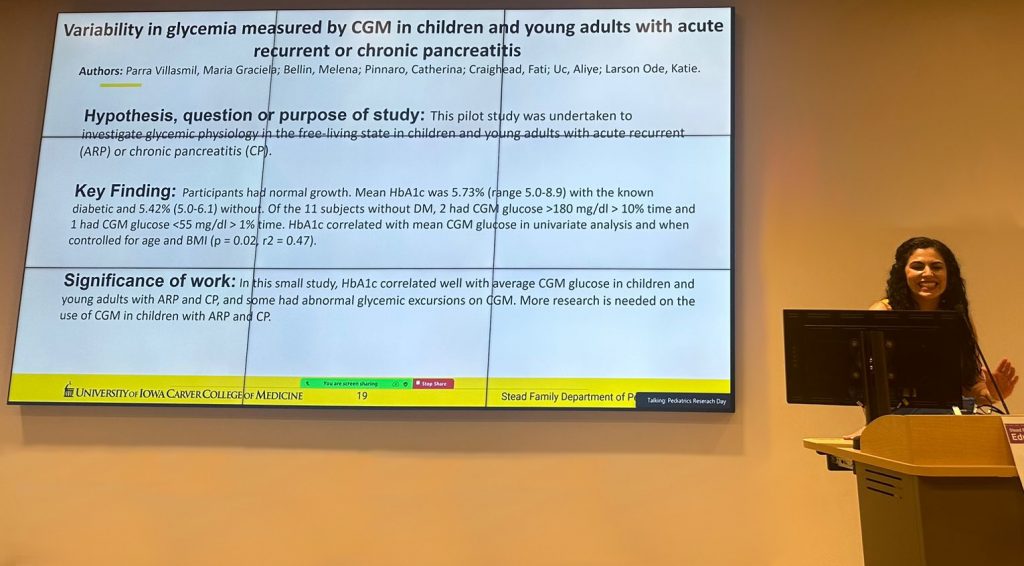
Children with recurrent pancreatitis are at risk to develop diabetes. However, current knowledge is insufficient to guide monitoring, screening, and therapy. Furthermore, there are no specific approaches to prevent diabetes from developing in those at risk. Additionally, there are very few pediatric endocrinologists with pancreatitis-specific expertise. To address these gaps, the Collaborative Alliance for Pancreatic Education and Research (CAPER) has created a program to identify rising physician specialists who can receive training to provide clinical care to these patients and to drive future research to better treat and even prevent endocrine complications from pancreatitis. We are pleased to broadcast that one of our Pediatric Endocrine Fellows, Dr. Parra Villasmil, has been selected as a CAPER Pancreas Scholar 2023-35. Dr. Parra Villasmil will receive mentorship from Dr. Melena Bellin who is a pancreas expert pediatric endocrinologist at the University of Minnesota. In this context, Dr. Parra Villasmil will develop a research project and participate in related national meetings. Congratulations to Dr. Parra Villasmil! We are not surprised that CAPER has recognized your talents and we look forward to her contributions to the field!















